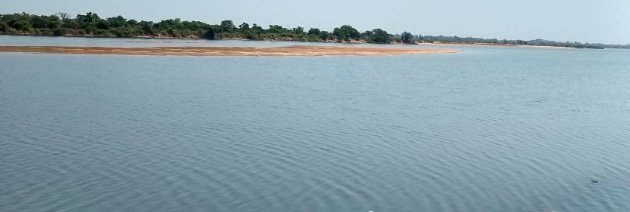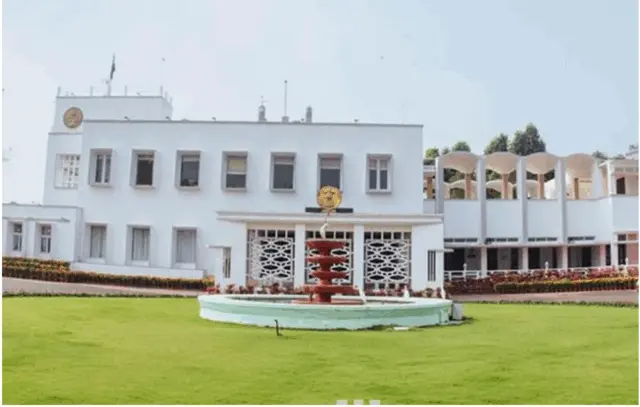In the early 1990s Odisha was an agrarian state, where most of the population were dependent on the agriculture. But agriculture in Odisha was always drastically hit by the natural calamities, as very often the state is hit by the wrath of cyclone and floods. Cyclone impacts the agriculture in the state predominantly. So the factor being the economy of Odisha could not rise as much. Earlier the state used to be extremely poor and underdeveloped.
So much so that the state had to borrow money to fulfill its internal expenses. In the year 2001-2 and Odisha was indebted by the 55.55 percent of its GDP, which was the highest amongst the other Indian states. There were about 47 percent population was coming below the poverty line. So Odisha was counted as one the poorest states from almost all the measures. Moreover the western part of the state which is extremely rich in minerals was the most poor and backward part.
Then the state slowly rose after 2000 when Mr Naveen Patnaik came as the Chief Minister of the state. Odisha achieved an exponential growth during his tenure. Today, the state is one of the fastest growing states in India. Which is why the development model of Odisha is discussed everywhere. The state slowly got to reduce the debt and in the financial year 2023-24 Odisha has only 13 percent debt from its GDP. This figure is counted as the lowest in the country. The poverty count has also drastically reduced as per the report of the Niti Aayog, the figure has come down from 47 percent to 24.44 percent. In 2023-25, the GDP of Odisha is growing in 10.57 percent mark, that is counted as more than the national level.
There are many facets which indicates the way to prosperity of the state. The first one is stable government, Naveen Patnaik was the chief minister of Odisha for 24 years. As the government was same for a very longer period of time the policies and schemes it created for the betterment of the state had no stagnation.
Many companies came and invested in Odisha seeing the stability of the government which was not the case earlier. So industrialization happened as Odisha is a state highly rich with minerals like chromite, nickel, bauxite, Iron oar and coal. In the past there used to be minings of these minerals but Odisha was not getting the benefits of it as these were used for running the companies established in other states. Naveen government changed this system by making the mining auctions process transparent. He made sure the revenues generated form the mining should be used in the development of Odisha. Then the development of the state began from the resources from the state.
The process of industrialization also was very slow before the major reason being lack of infrastructure, the policies then we’re not favorable for the industries. So many policies were introduced to attract the industries and to generate employment for the youth, so the GDP of the state would grow. Companies like TATA Steel ,JSPL, Vedanta had given Odisha more than 6 lakh crore investment. Tata Steel has announced Odisha as it’s single largest investment destination. Odisha gets the investments continuously every now and then through the rigorous effort by the government. The government of Odisha organizes Odisha Conclave to attract the investors every year. Presently, the contribution of industrialization in Odisha ‘s economy has become 43 percent.
The third reason is the 5T policy. It is the most innovative policy that had ever been introduced by any government. The logo 5T stands for Transparency, Teamwork, Technology, Timeline and Transformation. There was another very innovative initiative by the Navin government was ‘ Mo Sarkar ‘ . This was clubbed with the 5T policy in 2019. Under this initiative, the most crucial features were administration was gathering feedbacks from the people by visiting government offices, hospitals and public spaces. Then the chief minister, chief secretary and other senior officials used to connect with the people through phones for getting feedbacks. The government services were made to improve based on those feedbacks. The government officials who got more negative feedbacks from the people were terminated form their jobs.
Both these initiatives worked as the empowerment factors for the common people. Due to such initiatives, Odisha was counted as one of the least corrupt states in India as reported in the National Corruption Survey. As a result Odisha was ranked as the top most state in both human resource development index and economic governance in the Indian good governance index.
Skill development is the fourth factor in Odisha ‘s development. In 2015, central government had launched skill India mission. The scheme had aimed to train about 40,000 people till 2022. But in Odisha this sector was highly neglected as the skill training institutions were not in proper condition to provide neither a healthy environment, nor a good curriculum. In the year 2020, there were 49 government accredited ITIs functioning out of which 11 ITIs were ranked amongst the top hundred ITIs by the Union Ministry of Skill Development and Entrepreneurship of India. Moreover, more than hundred ITIs in Odisha achieve hundred percent placement at present.
Talking about women and girls education in Odisha, the enrollment of girls in schools had increased from 4% to 25% with time. The government of Odisha then focused on higher education along with skill development to improve employment generation in the state by setting up various educational institutions for higher studies.
The fifth most important aspect of the development of Odisha was disaster management. Odisha is a disaster prone state. Calamities like floods, cyclone, lightening strike are very much frequent here as it is situated in the bank of the Bay of Bengal. These disasters are not only life threatening for the people of the state but dangerous for the economy as well. In the 1999 super cyclone about 10,000 people had lost their lives. Similarly, in 2013, cyclone Phailin had affected around 11 lakh people in the state and damages more than four thousand properties. From the year 1891 to 2001, there have been more than 100 tropical cyclones that hit Odisha. The steps that has been taken by the state government then proved that how efficiently it has planned and executed the disaster management plan.
-OdishaAge
|
ReplyForward
|




